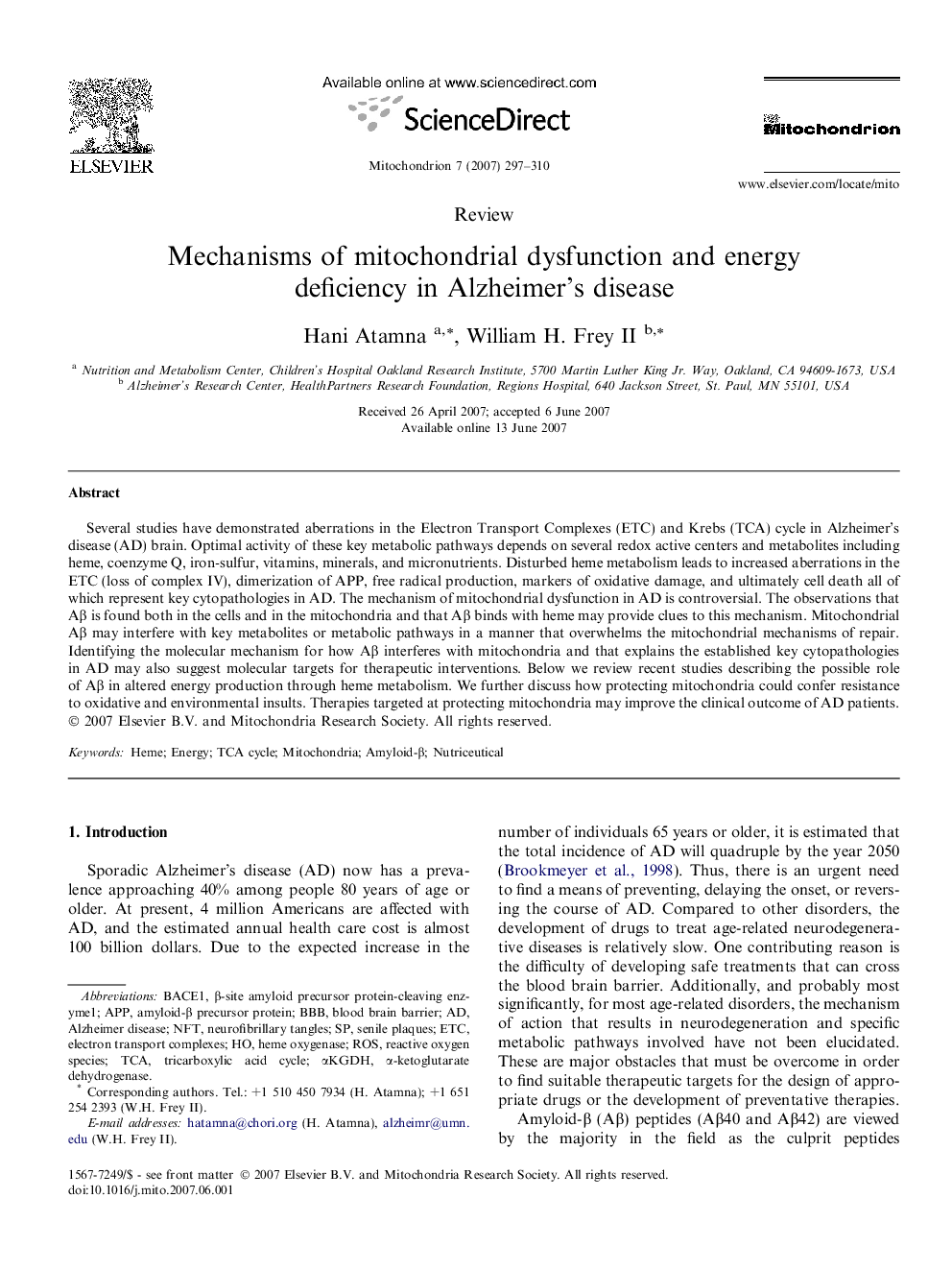| کد مقاله | کد نشریه | سال انتشار | مقاله انگلیسی | نسخه تمام متن |
|---|---|---|---|---|
| 2069389 | 1078383 | 2007 | 14 صفحه PDF | دانلود رایگان |

Several studies have demonstrated aberrations in the Electron Transport Complexes (ETC) and Krebs (TCA) cycle in Alzheimer’s disease (AD) brain. Optimal activity of these key metabolic pathways depends on several redox active centers and metabolites including heme, coenzyme Q, iron-sulfur, vitamins, minerals, and micronutrients. Disturbed heme metabolism leads to increased aberrations in the ETC (loss of complex IV), dimerization of APP, free radical production, markers of oxidative damage, and ultimately cell death all of which represent key cytopathologies in AD. The mechanism of mitochondrial dysfunction in AD is controversial. The observations that Aβ is found both in the cells and in the mitochondria and that Aβ binds with heme may provide clues to this mechanism. Mitochondrial Aβ may interfere with key metabolites or metabolic pathways in a manner that overwhelms the mitochondrial mechanisms of repair. Identifying the molecular mechanism for how Aβ interferes with mitochondria and that explains the established key cytopathologies in AD may also suggest molecular targets for therapeutic interventions. Below we review recent studies describing the possible role of Aβ in altered energy production through heme metabolism. We further discuss how protecting mitochondria could confer resistance to oxidative and environmental insults. Therapies targeted at protecting mitochondria may improve the clinical outcome of AD patients.
Journal: Mitochondrion - Volume 7, Issue 5, September 2007, Pages 297–310